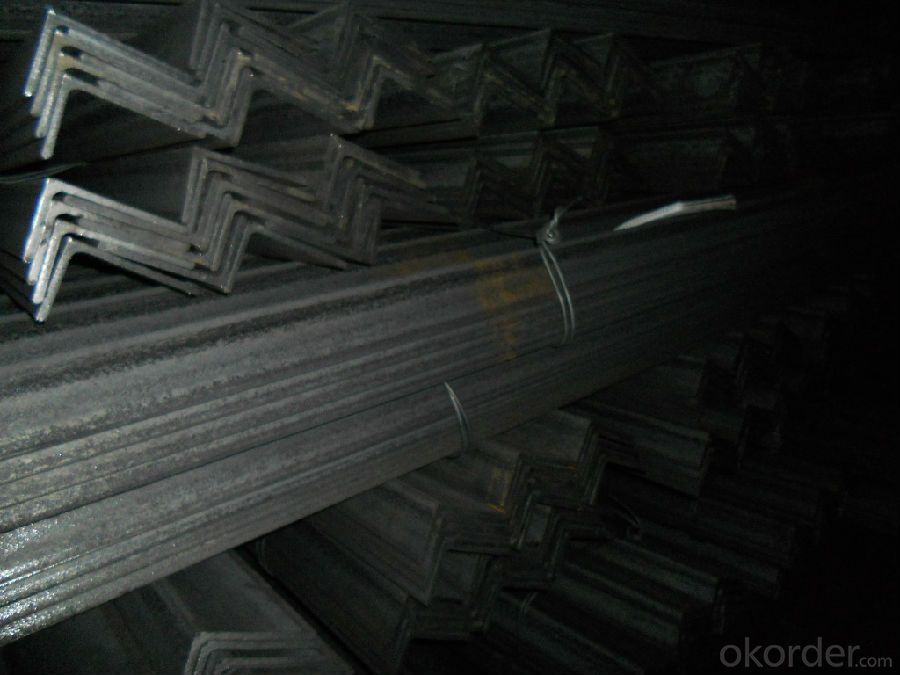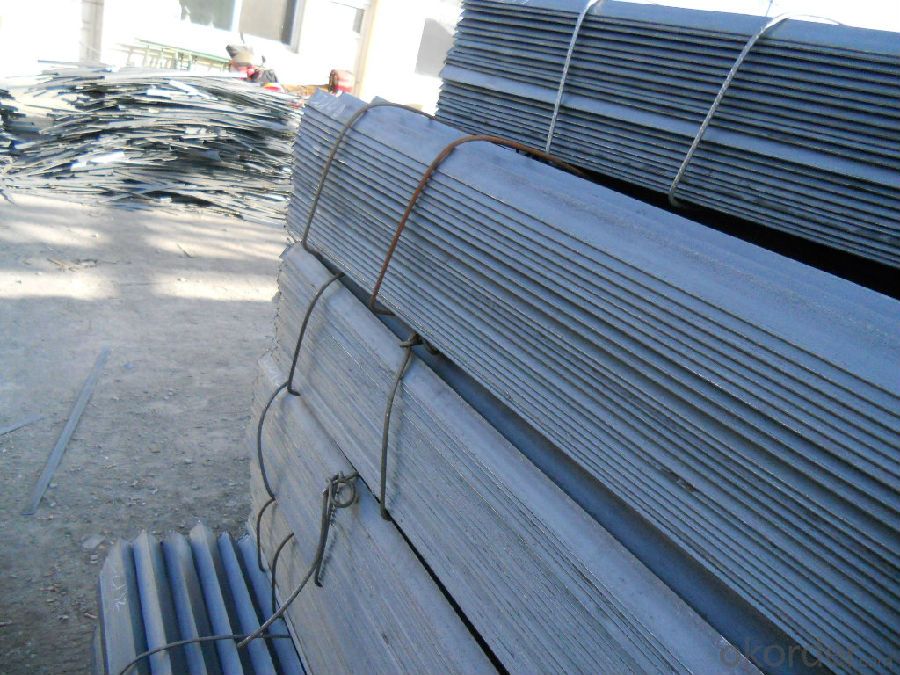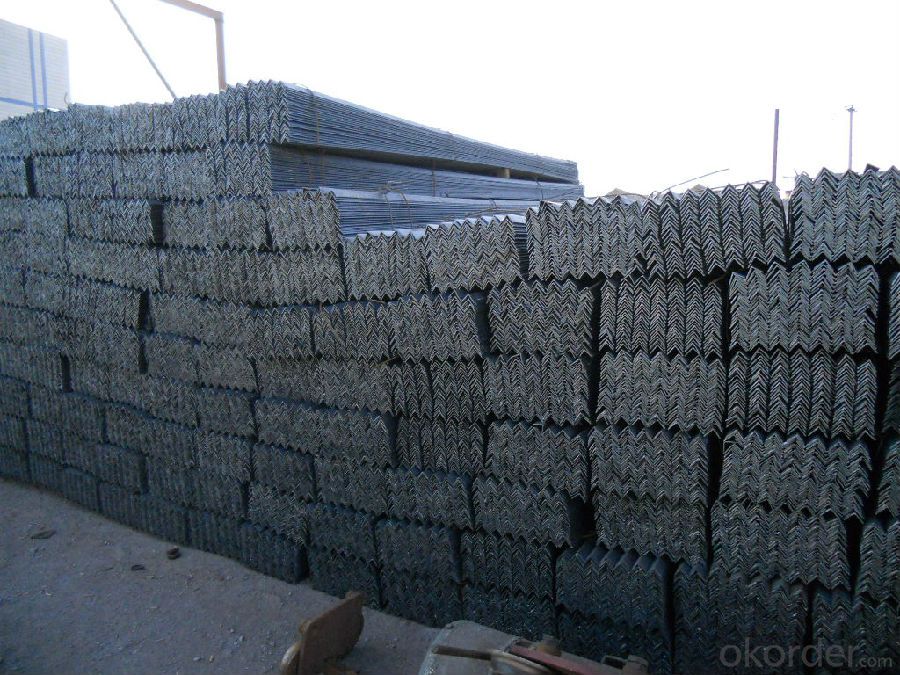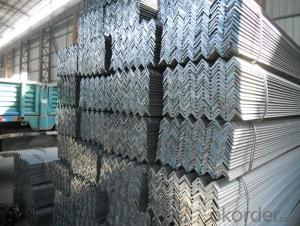HR Steel Angle Beams for Structures and for Buildings
- Loading Port:
- Guangzhou
- Payment Terms:
- TT OR LC
- Min Order Qty:
- 25 m.t.
- Supply Capability:
- 200000 m.t./month
OKorder Service Pledge
OKorder Financial Service
You Might Also Like
Product Description:
OKorder is offering HR Steel Angle Beams for Structures and for Buildings at great prices with worldwide shipping. Our supplier is a world-class manufacturer of steel, with our products utilized the world over. OKorder annually supplies products to European, North American and Asian markets. We provide quotations within 24 hours of receiving an inquiry and guarantee competitive prices.
Product Applications:
HR Steel Angle Beams for Structures and for Buildings are ideal for structural applications and are widely used in the construction of buildings and bridges, and the manufacturing, petrochemical, and transportation industries.
1. Supporting members, most commonly in the house raising industry to strengthen timber bears under houses. Transmission line towers, etc
2. Prefabricated structure
3. Medium scale bridges
4. It is widely used in various building structures and engineering structures such as roof beams, bridges, transmission towers, hoisting machinery and transport machinery, ships, industrial furnaces, reaction tower, container frame and warehouse etc.
Product Advantages:
HR Steel Angle Beams for Structures and for Buildings are durable, strong, and resist corrosion. And all the beams will be produced by steel billets of high quanlity in China with competitive prices.
Main Product Features:
· Premium quality
· Prompt delivery & seaworthy packing (30 days after receiving deposit)
· Corrosion resistance
· Can be recycled and reused
· Mill test certification
· Professional Service
· Competitive pricing
Product Specifications:
1. Invoicing on theoretical weight or actual weight as customer request
2. Length: 6m, 9m, 12m as following table
3. Sizes

Sizes: 25mm-250mm | ||
a*t | ||
25*2.5-4.0 | 70*6.0-9.0 | 130*9.0-15 |
30*2.5-6.6 | 75*6.0-9.0 | 140*10-14 |
36*3.0-5.0 | 80*5.0-10 | 150*10-20 |
38*2.3-6.0 | 90*7.0-10 | 160*10-16 |
40*3.0-5.0 | 100*6.0-12 | 175*12-15 |
45*4.0-6.0 | 110*8.0-10 | 180*12-18 |
50*4.0-6.0 | 120*6.0-15 | 200*14-25 |
60*4.0-8.0 | 125*8.0-14 | 250*25 |
5. Payment terms:
1).100% irrevocable L/C at sight.
2).30% T/T prepaid and the balance against the copy of B/L.
3).30% T/T prepaid and the balance against L/C
6.Material details:
Alloy No | Grade | Element (%) | |||||
C | Mn | S | P | Si | |||
Q235 | B | 0.12—0.20 | 0.3—0.7 | ≤0.045 | ≤0.045 | ≤0.3 | |
Alloy No | Grade | Yielding strength point( Mpa) | |||||
Thickness (mm) | |||||||
≤16 | >16--40 | >40--60 | >60--100 | ||||
≥ | |||||||
Q235 | B | 235 | 225 | 215 | 205 | ||
Alloy No | Grade | Tensile strength (Mpa) | Elongation after fracture (%) | ||||
Thickness (mm) | |||||||
≤16 | >16--40 | >40--60 | >60--100 | ||||
≥ | |||||||
Q235 | B | 375--500 | 26 | 25 | 24 | 23 | |
FAQ:
Q1: How do we guarantee the quality of our products?
A1: We have established an advanced quality management system which conducts strict quality tests at every step, from raw materials to the final product. At the same time, we provide extensive follow-up service assurances as required.
Q2: How soon can we receive the product after purchase?
A2: Within three days of placing an order, we will begin production. The specific shipping date is dependent upon international and government factors, but is typically 7 to 10 workdays.
Q4: Can HR Steel Angle Beams for Structures and for Buildings rust?
A4: Maybe there is some little rust on the suface of goods, but it dosen't afect the usage.



- Q:How do you calculate the weight-bearing capacity of a steel angle?
- To calculate the weight-bearing capacity of a steel angle, you need to consider its dimensions, material properties, and loading conditions. The weight-bearing capacity can be calculated using engineering formulas and techniques such as the Euler formula or the AISC Manual. These calculations take into account factors like the cross-sectional area, moment of inertia, and the applied loads to determine the maximum load the steel angle can support without failure.
- Q:How do steel angles differ from steel channels?
- Steel angles and steel channels differ in their structural shape. Steel angles have an L-shaped cross-section, consisting of two legs that are perpendicular to each other. On the other hand, steel channels have a U-shaped cross-section, with a flat bottom and two flanges on the sides. These different shapes make steel angles suitable for providing structural support and stability in various applications, while steel channels are often used for framing and reinforcement purposes.
- Q:How do you store and transport steel angles?
- In order to ensure the safety and prevent damage of steel angles during storage and transportation, it is crucial to adhere to specific guidelines. Consider the following steps: 1. Find an appropriate storage location: Locate a well-ventilated, dry, and clean area that is free from moisture or chemicals that may cause corrosion. Ideally, choose an indoor storage area to shield the steel angles from the elements. 2. Properly organize and stack: Prioritize organizing the steel angles according to their size, shape, and weight. Stack them horizontally, one on top of another, with heavier angles at the bottom to prevent deformation or damage to lighter ones. Insert wooden or rubber spacers between layers to minimize direct contact and reduce the risk of scratches or other surface flaws. 3. Secure the stack: Use strong metal bands, straps, or chains to tightly bind the stack of steel angles. This will prevent movement during transportation and decrease the chances of accidents or damage. 4. Utilize appropriate lifting equipment: When handling steel angles, it is crucial to employ suitable lifting equipment such as cranes, forklifts, or hoists. Ensure that the equipment has the necessary capacity to safely lift the angles and distribute the lifting points evenly to avoid bending or distortion. 5. Guard against corrosion: Prior to storage and transportation, apply a corrosion-resistant coating or protective oil film to the steel angles. This will help prevent rusting and other forms of corrosion caused by exposure to moisture or environmental factors. 6. Secure packaging during transportation: If the steel angles need to be transported over long distances, consider using appropriate packaging materials like wooden crates or steel pallets to provide additional protection. Fasten the angles securely to the packaging to prevent any movement or shifting during transit. 7. Regularly inspect: Conduct regular inspections of the stored and transported steel angles to identify any signs of corrosion, damage, or deformation. Take immediate action to prevent further deterioration if any issues are detected. By adhering to these guidelines, you can ensure the safe storage and transportation of steel angles, thereby minimizing the risk of damage and preserving their quality.
- Q:Can steel angles be used for fencing and gates?
- Yes, steel angles can be used for fencing and gates. Steel angles are commonly used in construction and can provide strength and stability to fencing and gate structures. They can be used as posts, rails, or supports to ensure durability and security.
- Q:What is the fire resistance rating of steel angles?
- The fire resistance rating of steel angles depends on various factors such as the size and thickness of the angle, the type of steel used, and the specific fire protection measures implemented. Steel is inherently fire-resistant due to its high melting point and low thermal conductivity. However, the fire resistance rating can be enhanced by applying fireproofing materials, such as intumescent coatings or fire-resistant boards, to the steel angles. These fire protection measures can significantly increase the fire resistance rating of steel angles by providing insulation and slowing down the transfer of heat to the steel. The specific fire resistance rating can vary based on the thickness and type of fireproofing materials used. For example, a steel angle with a certain fireproofing coating may have a fire resistance rating of 60 minutes, meaning it can withstand exposure to fire for up to 60 minutes before losing its structural integrity. It is important to consult local building codes, regulations, and fire safety standards to determine the specific fire resistance requirements for steel angles in a particular application. These standards can provide guidance on the necessary fire protection measures and the minimum fire resistance ratings that need to be met in different construction scenarios.
- Q:Can steel angles be used for stairs in industrial settings?
- In industrial settings, stairs can indeed utilize steel angles. The construction industry often employs steel angles for a wide range of purposes, including staircases. Their strength and durability make them particularly well-suited for industrial environments where safety and robustness are paramount. By providing structural support and stability, steel angles enable staircases to endure heavy loads and frequent usage. Moreover, the ease of welding steel angles ensures that the resulting staircase is secure and long-lasting. Additionally, steel angles offer versatility, allowing for customization to meet specific design and spatial needs. As a result, steel angles are an appropriate option for stairs in industrial settings.
- Q:What are the different methods for protecting steel angles from corrosion?
- There are multiple ways to safeguard steel angles from corrosion. Firstly, galvanization is a commonly employed technique. It involves applying a layer of zinc to the steel angle's surface. This zinc layer acts as a sacrificial anode, corroding before the steel and safeguarding it from rust. Galvanization is particularly effective in outdoor applications like construction and infrastructure projects. Another method is using paint coatings. By coating the steel angle with paint, a protective layer is formed, preventing moisture and oxygen from reaching the surface and hindering corrosion. For long-term protection, it is crucial to use high-quality, corrosion-resistant paints. Powder coating is also an option. It entails applying a dry powder to the steel angle which is then cured at high temperatures. This creates a robust and durable layer on the surface, offering exceptional resistance to corrosion. Powder coating is suitable for both indoor and outdoor applications and provides an appealing finish. Furthermore, stainless steel angles can be utilized to guard against corrosion. Stainless steel contains chromium, which forms a passive oxide layer on the surface, acting as a protective barrier. This makes stainless steel highly resistant to rust, making it a preferred choice when corrosion is a concern. Lastly, cathodic protection is a technique that involves making the steel angle the cathode in a corrosion cell. This can be achieved by connecting the steel angle to a sacrificial anode, such as zinc or aluminum, or by employing impressed current systems. By doing so, the anode corrodes instead of the steel, effectively protecting it from corrosion. It is important to consider various factors, including the intended application, environmental conditions, and budget constraints when selecting the appropriate method for protecting steel angles from corrosion. Consulting corrosion experts and considering project-specific requirements is advisable to ensure the most suitable method is chosen.
- Q:Can steel angles be used in sign support structures?
- Yes, steel angles can be used in sign support structures. Steel angles are commonly used in construction as they provide excellent strength and structural support. They can be easily welded or bolted together to form sturdy sign support structures that can withstand various weather conditions and loads.
- Q:How do steel angles provide structural support?
- Structural support is provided by steel angles, which evenly and efficiently distribute weight and load in a structure. These L-shaped steel beams are commonly used in construction. The stability and strength of the angle's two legs enable it to resist bending and twisting forces. Steel angles are frequently combined with other structural components like beams, columns, and trusses to establish a stable framework. They can be connected to these components through bolting, welding, or other methods to offer additional support and reinforcement. Due to their versatility, steel angles can be utilized in various applications, including building frames, supports, bracing, and structural reinforcement. The incorporation of steel angles in a structure helps evenly distribute weight and load across different components, reducing the risk of structural failure. They effectively resist compressive, tensile, and bending forces, providing stability and preventing deformation under heavy loads or external forces like wind or earthquakes. Furthermore, steel angles serve to create secure connections and joints between different parts of a structure, ensuring their firm fastening. This enhances overall stability and integrity, making the structure more resistant to movement, vibrations, and other external factors that could compromise safety. In summary, steel angles play a vital role in providing structural support. They distribute weight, resist bending and twisting forces, enhance stability, and reinforce connections between different structural components. Their strength, versatility, and reliability make them a popular choice in construction projects where structural integrity and stability are paramount.
- Q:Can steel angles be used for scaffolding?
- Yes, steel angles can be used for scaffolding. They are commonly used as structural components due to their strength, stability, and durability. Steel angles provide a stable and secure platform for workers to access higher areas during construction or maintenance activities.
1. Manufacturer Overview |
|
|---|---|
| Location | |
| Year Established | |
| Annual Output Value | |
| Main Markets | |
| Company Certifications | |
2. Manufacturer Certificates |
|
|---|---|
| a) Certification Name | |
| Range | |
| Reference | |
| Validity Period | |
3. Manufacturer Capability |
|
|---|---|
| a)Trade Capacity | |
| Nearest Port | |
| Export Percentage | |
| No.of Employees in Trade Department | |
| Language Spoken: | |
| b)Factory Information | |
| Factory Size: | |
| No. of Production Lines | |
| Contract Manufacturing | |
| Product Price Range | |
Send your message to us
HR Steel Angle Beams for Structures and for Buildings
- Loading Port:
- Guangzhou
- Payment Terms:
- TT OR LC
- Min Order Qty:
- 25 m.t.
- Supply Capability:
- 200000 m.t./month
OKorder Service Pledge
OKorder Financial Service
Similar products
New products
Hot products
Related keywords




























